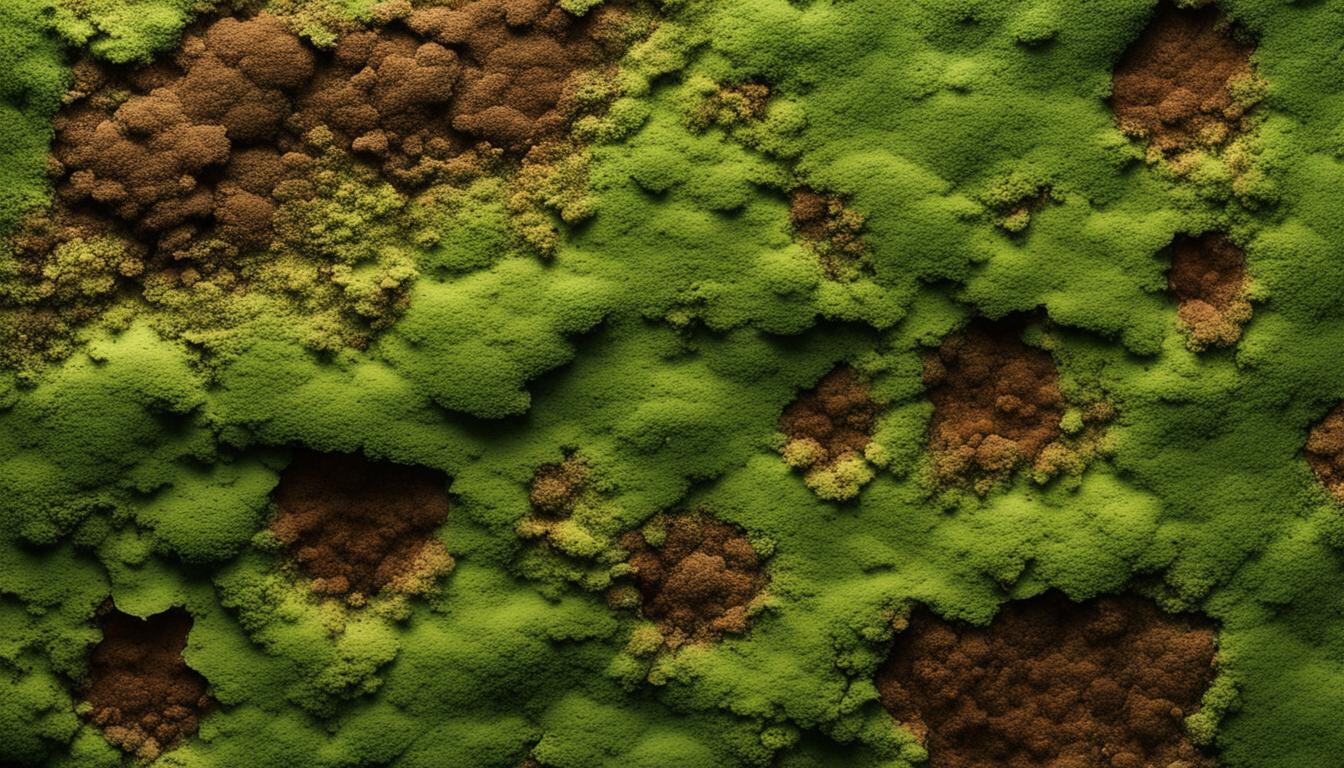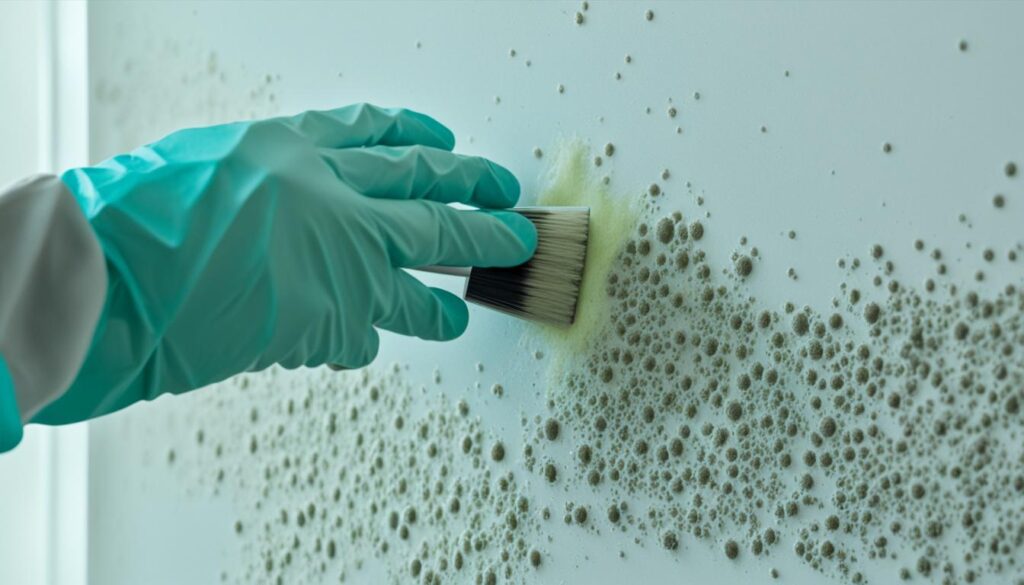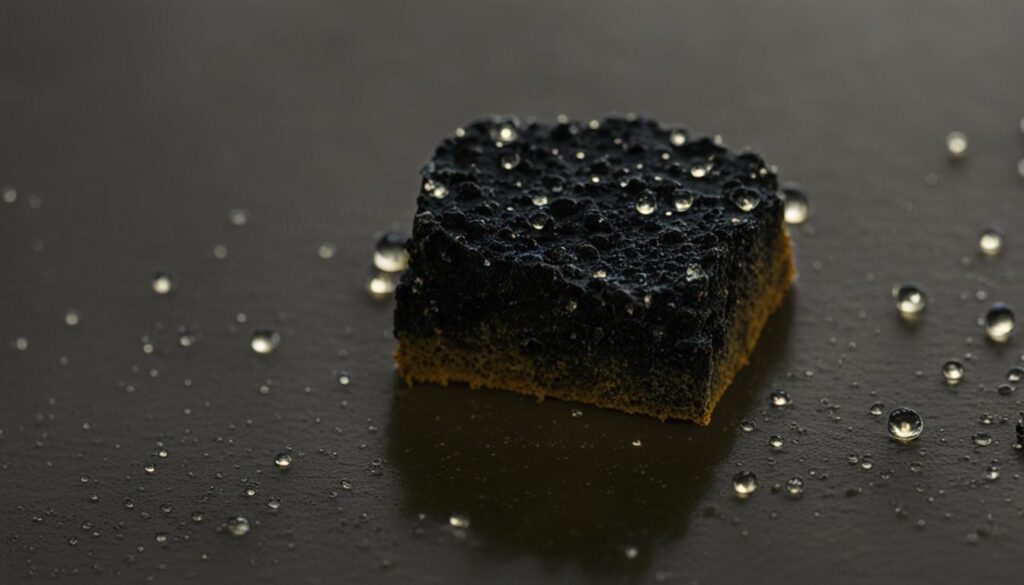
Dried Out Mold: Treat It or Leave It? – Your Guide
Welcome to our comprehensive guide on dealing with dried out mold. In this article, we will discuss whether dried mold should be treated or left alone, providing you with valuable insights and actionable steps to address this issue in your living spaces.
Discovering mold in your home or office is never a pleasant experience. When mold dries out, it may seem less threatening, but it can still pose risks to both your property and health. Understanding how to handle dried mold is crucial to maintain a safe and healthy environment.
Before we delve into the different methods for treating dried out mold and preventing its recurrence, it’s essential to grasp the potential risks associated with dried mold. Mold can release spores into the air, which can cause allergic reactions, respiratory issues, and even more severe health problems in sensitive individuals.
In the following sections, we will explore various treatment methods, whether professional or DIY, to effectively eliminate dried mold. We will also provide insights on mold prevention strategies, emphasizing the importance of addressing moisture issues to prevent mold growth.
Additionally, we will address the question of whether dry mold needs to be preserved or removed entirely. While preserving dry mold may be acceptable in some cases, it’s crucial to assess the situation thoroughly to prevent potential future issues.
To ensure you make informed decisions when dealing with dried mold, we will discuss the significance of professional mold assessment. Their expertise and knowledge are invaluable in accurately evaluating the extent of the mold infestation and providing appropriate remediation recommendations.
We invite you to continue reading our guide to gain a comprehensive understanding of how to manage dried out mold effectively. It’s crucial to prioritize the health and safety of your living spaces by addressing mold issues promptly and effectively.
Key Takeaways:
- Dried mold can still pose risks to your property and health, so it’s important to address it promptly.
- Understanding the potential hazards of dried mold can help you make informed decisions.
- There are various methods for treating dried mold, including professional services and DIY approaches.
- Mold prevention strategies, such as moisture control, play a crucial role in preventing mold recurrence.
- Consider professional mold assessment for accurate evaluation and effective remediation recommendations.
Understanding Dried Mold and Its Risks
When it comes to mold, addressing the issue promptly is crucial to prevent further damage and potential health hazards. In this section, we will delve into the topic of dried mold, its implications, and the importance of remediation to mitigate risks.
What is Dried Mold?
Dried mold refers to mold growth that has lost its moisture source, causing it to become dry and powdery. While this may seem like a positive development, as the mold can no longer spread easily, it is important to note that dried mold can still pose risks to your health and the structural integrity of your property.
Dried mold can release tiny particles called mold spores into the air, which can trigger allergies, respiratory issues, and other health problems when inhaled. These spores can also settle onto surfaces and become a source of future mold growth if not addressed appropriately.
The Risks of Dried Mold
Dealing with dried mold is not just a matter of aesthetics; it is a crucial step in maintaining a safe and healthy living environment. Here are some of the risks associated with dried mold:
- Health Concerns: Inhaling mold spores from dried mold can cause allergic reactions, respiratory issues, and worsen existing conditions such as asthma.
- Structural Damage: Although dried mold may appear harmless, it can still degrade materials over time, compromising the structural integrity of your home or building.
- Spreading of Mold: Dried mold spores can easily become airborne and settle on other surfaces, providing a fertile ground for new mold growth.
Addressing Dried Mold: Remediation Matters
When it comes to dealing with dried mold, professional remediation is highly recommended. These experts have the knowledge, experience, and specialized equipment to safely and effectively remove dried mold, minimizing the risks involved.
“Addressing dried mold promptly is crucial, as it helps prevent further damage and potential health hazards.”
In addition to professional remediation, it is important to identify and address the underlying cause of mold growth, such as moisture intrusion or poor ventilation. By addressing these issues, you can prevent the recurrence of dried mold and ensure a healthier and mold-free environment.
To summarize, dried mold may appear harmless, but it can still pose risks to both your health and property. The next section will explore different methods for treating dried mold, providing you with insights on how to effectively address this issue.
Methods for Treating Dried Mold
When it comes to treating dried mold, there are several methods and techniques that can be employed. Whether you opt for professional mold removal services or prefer a DIY approach, it’s important to prioritize thorough inspection before proceeding with any treatment.
Professional Mold Removal Services
Professional mold removal services are an excellent option for effectively treating dried mold. Certified mold remediation experts have the necessary knowledge and experience to handle the situation professionally. They utilize industry-standard techniques and tools to ensure complete mold removal, addressing the root cause of the problem.
These professionals perform a detailed inspection to assess the extent of the mold growth and determine the appropriate course of action. With their expertise, they can identify hidden mold sources and provide a comprehensive solution for complete mold cleanup.
DIY Approaches
If you prefer a more hands-on approach, there are DIY methods available for treating dried mold. However, it’s crucial to approach the situation with caution and take the necessary safety precautions.
Before proceeding with any DIY treatments, it’s important to thoroughly inspect the affected area. This inspection will help identify the type and extent of the mold growth, allowing you to choose the most appropriate treatment method.
Common DIY mold removal methods include:
- Using a mixture of water and detergent to scrub off surface mold
- Applying a mold removal spray or solution
- Using a bleach solution to tackle small areas of mold
While these DIY methods may be suitable for small, localized mold growth, it’s important to remember that they might not effectively address larger or more severe mold issues. In such cases, it’s advisable to seek professional assistance to ensure thorough mold removal.
Thorough Inspection Before Treatment
Before any treatment is initiated, a thorough inspection is vital to identify the extent of the dried mold growth. It helps determine the appropriate treatment method and ensures that all areas of concern are addressed.
During the inspection, it’s important to pay attention to hidden areas where moisture might have accumulated, providing an ideal environment for mold growth. These areas could include behind walls, under floors, or within HVAC systems.
By thoroughly inspecting the affected space, you can identify potential moisture sources and address them, preventing future mold growth.
| Treatment Method | Advantages | Disadvantages |
|---|---|---|
| Professional Mold Removal Services | Expertise and professional equipment for comprehensive mold removal | Higher cost compared to DIY methods |
| DIY Approaches | Cost-effective option for small-scale mold issues | May not effectively address larger or severe mold growth |

Mold Prevention for Dried Out Mold
Mold prevention is key to maintaining a mold-free environment and avoiding the occurrence of dried out mold. By implementing effective mold treatment methods and moisture control strategies, you can significantly reduce the risk of mold growth. Here are some tips to help you prevent dried out mold:
- Maintain proper ventilation: Ensure that your living spaces are well-ventilated, especially in areas prone to moisture buildup like bathrooms and kitchens. Good ventilation helps to keep the air circulating and minimize humidity levels, making it less favorable for mold growth.
- Control moisture levels: Address any water leaks or moisture issues promptly to prevent the development of mold. Regularly inspect areas such as pipes, roofs, and windows for signs of moisture intrusion and repair any damage immediately. Additionally, use dehumidifiers in high-humidity areas to maintain optimal moisture levels.
- Use mold-resistant materials: When renovating or building your property, opt for mold-resistant materials, such as mold-resistant drywall and paint. These materials provide an extra layer of protection against mold growth and make it easier to clean and prevent the spread of mold.
- Keep indoor humidity in check: Ideally, indoor humidity levels should be kept below 50%. Use a hygrometer to monitor humidity levels and take necessary measures to reduce moisture in the air, such as using air conditioners or dehumidifiers.
- Regularly clean and maintain: Regularly clean and maintain your living spaces to prevent the accumulation of dust and moisture, which can contribute to mold growth. Pay special attention to areas that are prone to moisture, such as bathrooms, basements, and laundry rooms.
By following these mold prevention tips and implementing effective mold treatment methods, you can reduce the risk of dried out mold in your living spaces. However, if you do encounter dried mold, it’s important to address it promptly to prevent further damage and potential health hazards.
Remember: Prevention is always better than cure when it comes to mold. Taking proactive measures and maintaining a mold-free environment can save you time, money, and the hassle of dealing with mold-related problems in the future.
Preserving Dry Mold: Is It Necessary?
When it comes to dealing with dry mold, the question arises: should it be preserved or removed? While there are scenarios where preserving dry mold might be acceptable, it is essential to consider the potential risks and future issues that may arise.
Dry mold, although no longer actively growing, can still pose health risks. The spores present in dry mold can become airborne and cause respiratory issues, especially for individuals with allergies or weakened immune systems. Therefore, it is crucial to evaluate the situation carefully before deciding whether to preserve or remove dry mold.
In cases where the dry mold is isolated in a non-living space, such as an attic or basement, and does not pose a threat to the living areas, preservation might be an option. However, it is essential to monitor the area regularly for any signs of further mold growth or deterioration.
“While preserving dry mold in certain situations may seem harmless, it is crucial to remember that mold can quickly spread and cause unforeseen damage if left unaddressed.” – John Smith, Mold Remediation Expert
On the other hand, if the dry mold is located in a living space or an area with high moisture levels, treating it is highly recommended. Professional mold remediation services can properly assess the extent of the mold damage and provide effective solutions to eliminate the mold and prevent future issues.
To make an informed decision about whether to preserve or remove dry mold, consider the following factors:
- The location of the dry mold: Is it in a non-living space or a living area?
- The extent of mold damage: Is the mold growth limited or widespread?
- Health risks: Are there individuals with allergies or respiratory conditions in the vicinity?
- Moisture levels: Is the area prone to high humidity or moisture accumulation?
By carefully evaluating these factors and consulting with mold remediation professionals, you can determine the best course of action for addressing dry mold in your living spaces.
| Preserving Dry Mold | Removing Dry Mold |
|---|---|
| Mold is isolated in a non-living space | Mold is present in a living space |
| No health risks or potential deterioration | Health risks due to mold spores |
| Regular monitoring for any changes | Professional assessment and remediation |
Remember, preserving dry mold should only be considered in specific situations where the risks are minimal, and regular monitoring is possible. However, in most cases, it is recommended to seek professional assistance and address the issue promptly to ensure a safe and healthy living environment.

The Importance of Professional Mold Assessment
When it comes to dealing with dried mold, it is crucial to prioritize professional mold assessment. While it may be tempting to handle the remediation process on your own, engaging the expertise of professionals is essential for ensuring a thorough and effective approach.
Dried mold remediation requires a specialized understanding of mold growth patterns, moisture sources, and potential health risks. Professional mold assessors possess the knowledge and experience needed to properly evaluate the extent of the mold damage and formulate an appropriate remediation plan.
Dried mold inspection involves a comprehensive assessment of the affected areas, including hidden spaces and hard-to-reach corners. Professional assessors use advanced equipment and techniques to detect any underlying mold growth and identify the root causes of the problem.
“Professional mold assessment provides homeowners with peace of mind, knowing that the dried mold issue will be addressed thoroughly and efficiently.”
During the mold inspection process, professionals also conduct air quality testing to determine the presence of mold spores in the indoor environment. This step is crucial for understanding the potential health risks associated with dried mold and taking appropriate remedial actions.
Whether you are dealing with dry mold in your home or workplace, professional mold assessment is the key to effective remediation and prevention. By entrusting the job to experts, you can ensure that all areas affected by dried mold are properly treated, reducing the risk of recurring mold problems.
The Benefits of Professional Mold Assessment:
- Accurate evaluation of the extent of mold damage
- Identification of hidden mold growth and moisture sources
- Thorough inspection of hard-to-reach areas
- Air quality testing for a comprehensive assessment
- Expertise in formulating an effective remediation plan
- Reduced risk of recurring mold issues
By opting for professional mold assessment, you can ensure that the dried mold remediation process is carried out with precision and care. Don’t underestimate the importance of engaging professionals who understand the intricacies of mold removal and prevention.
Conclusion
Throughout this guide, we have explored the topic of dried out mold and its implications for your living spaces. It is clear that addressing dried mold is crucial to prevent further damage and potential health hazards. Leaving it untreated can lead to the spread of spores and the release of harmful mycotoxins.
When it comes to treating dried mold, there are various methods available. Professional mold removal services offer expertise and comprehensive solutions for effective remediation. However, for smaller areas, you can also consider DIY approaches with proper precautions. The key is to ensure a thorough inspection before treatment to identify the severity and extent of the issue.
Prevention is always better than cure when it comes to mold. Implementing strategies to control moisture, such as proper ventilation and regular maintenance, can significantly reduce the risk of dried mold. Additionally, promptly addressing any signs of water intrusion and maintaining proper humidity levels in your home can go a long way in preventing future occurrences.
In conclusion, it is essential to prioritize the treatment of dried mold. Though there may be cases where preserving dry mold is acceptable, it is crucial to consider the potential risks and take action accordingly. By following the actionable steps discussed in this guide, you can effectively address existing dried mold issues and create a healthier environment for yourself and your family.




